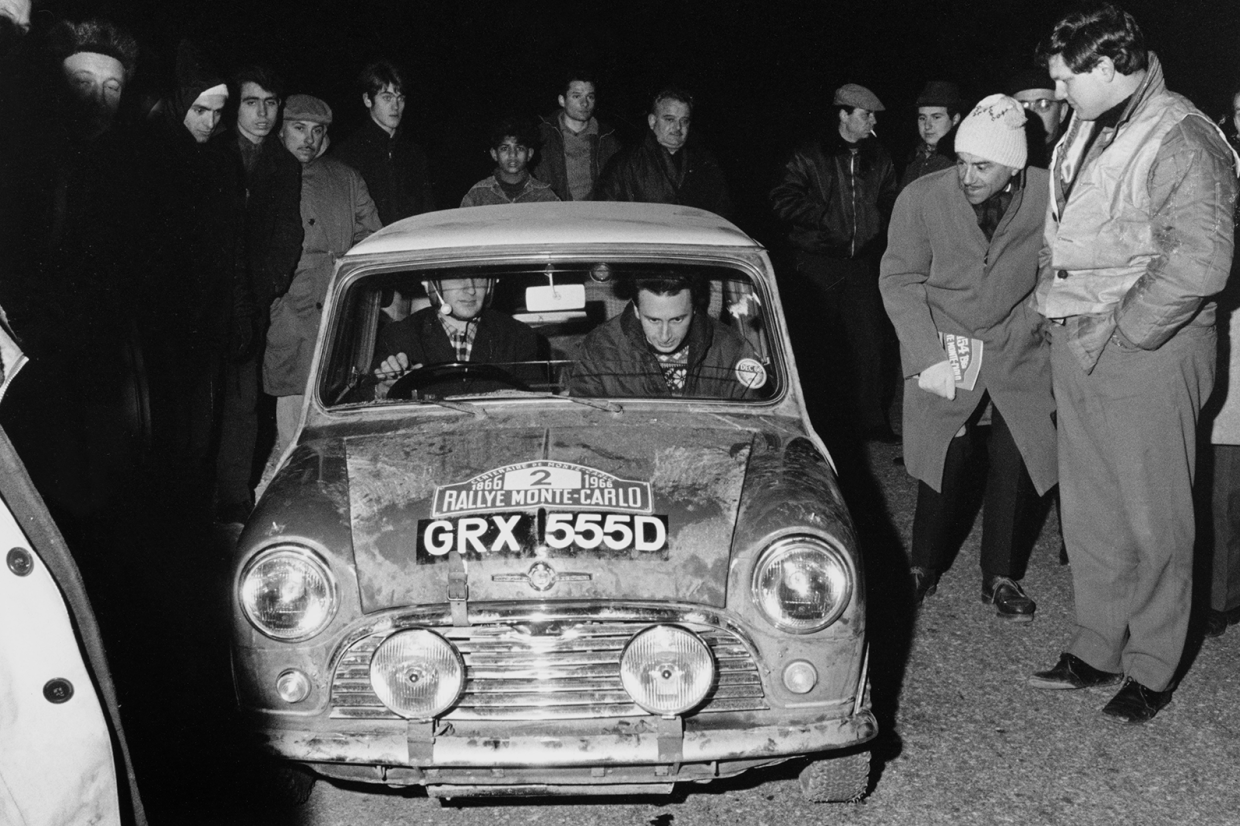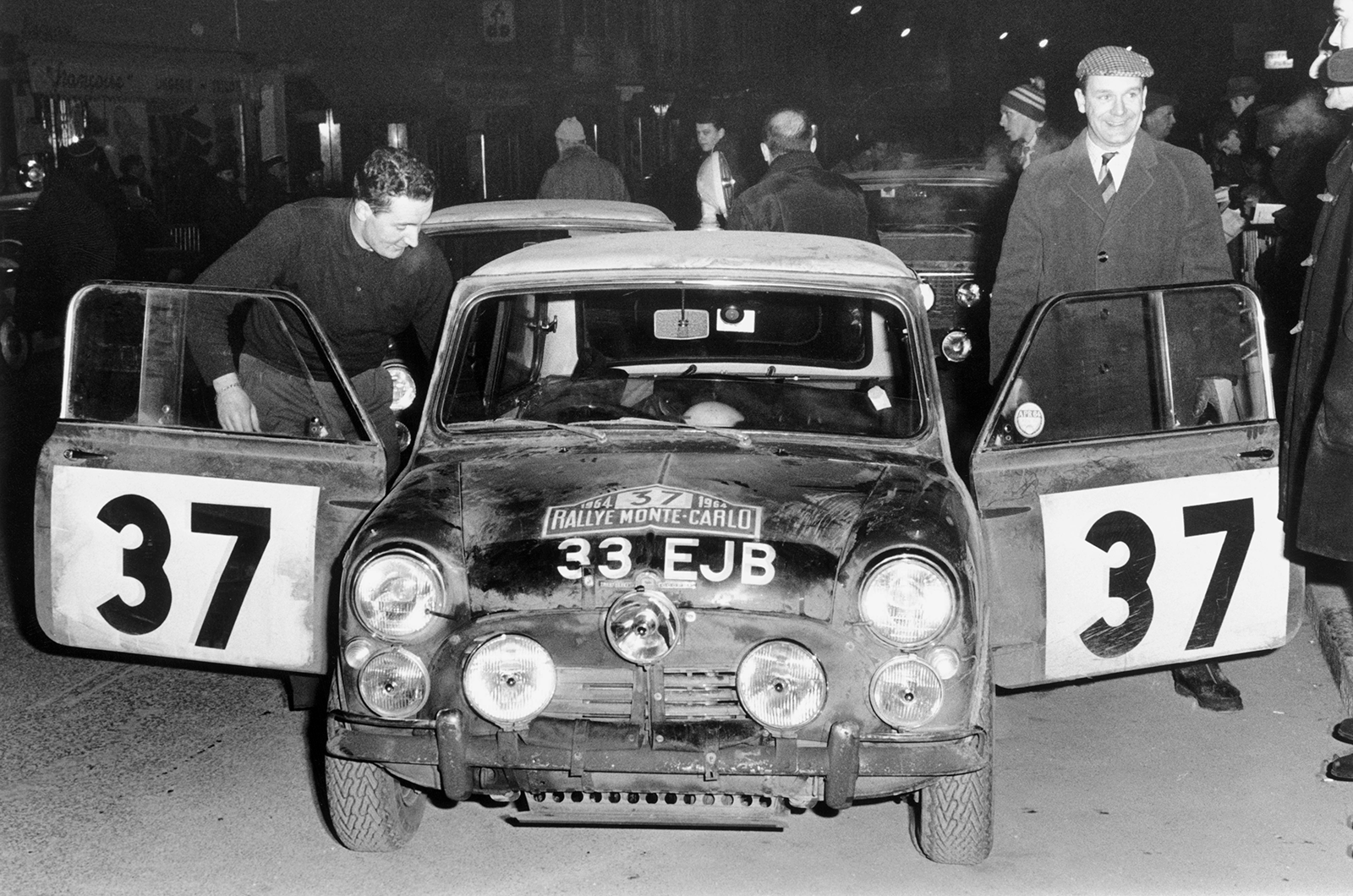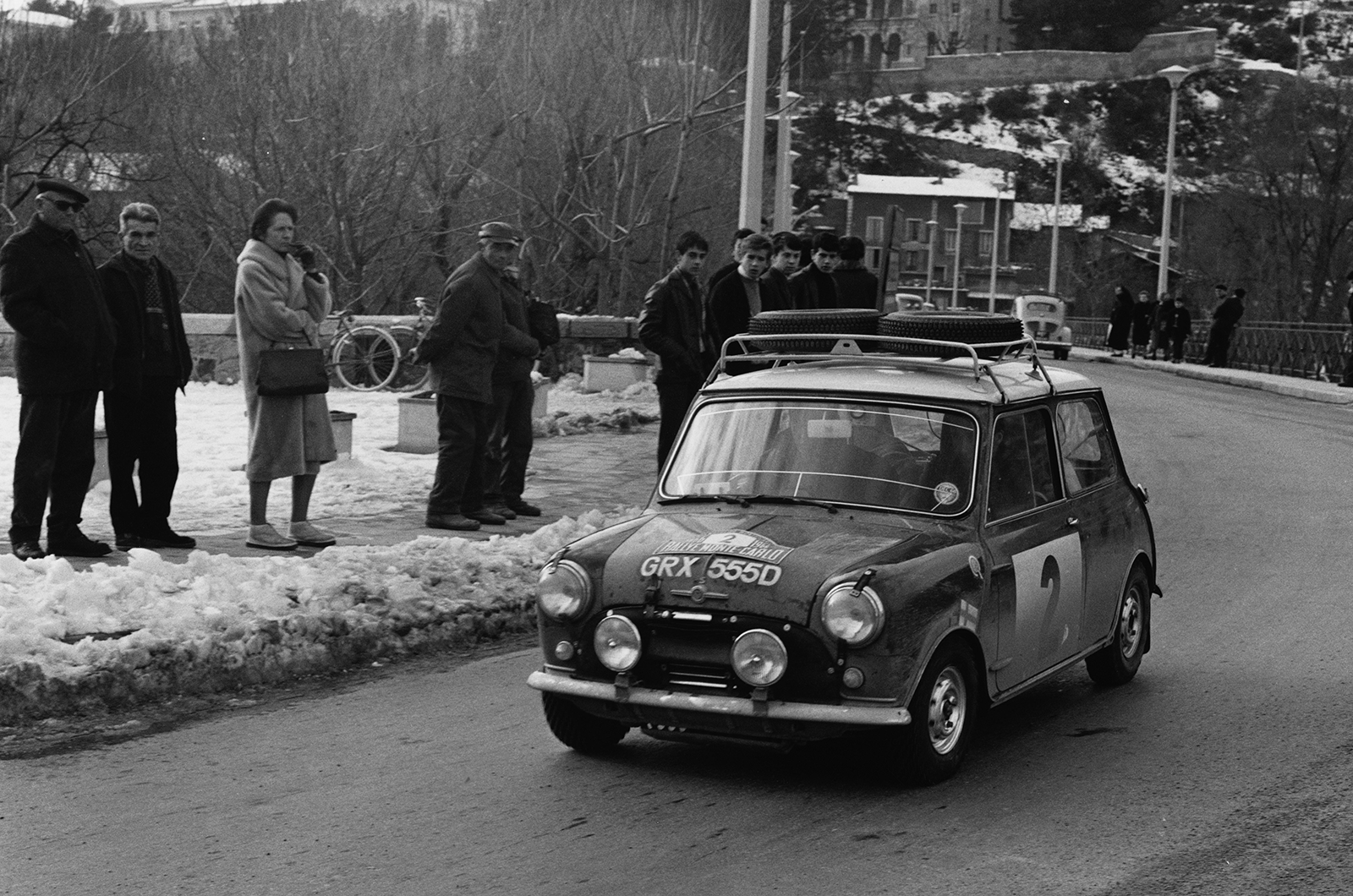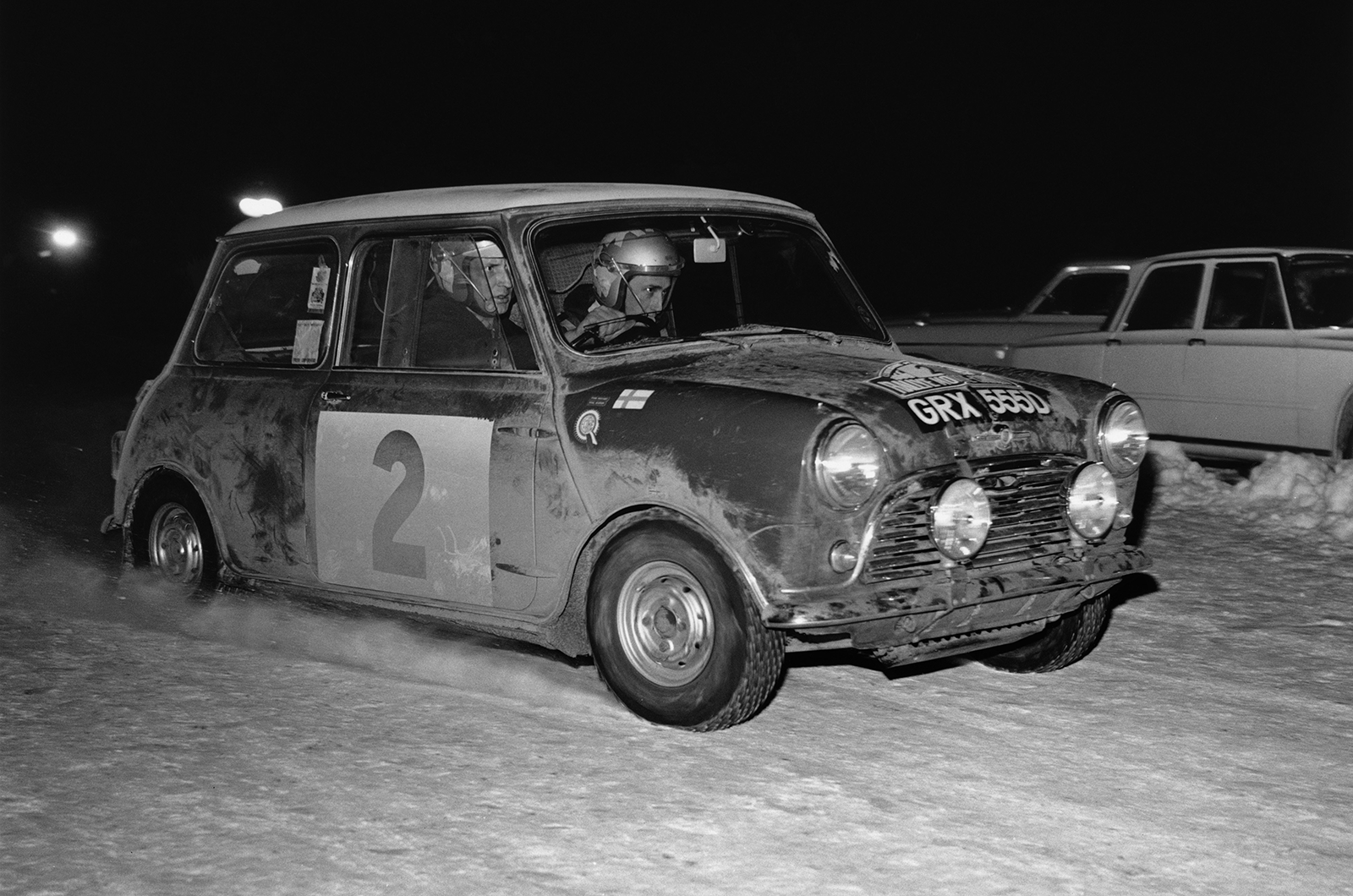
It caused an outcry that went beyond the motorsport world. Even the mainstream press railed at the injustice of it all, there was talk of appeals and boycotts, and sensible folk were heard to mutter that it would spell the end of an event that could trace its history back to 1911.
It didn’t, of course. The Monte Carlo Rally survived and prospered – and indeed, the 87th edition starts this week – but 1966 was by no means its finest hour. What should have been a third overall win for the Mini descended into farce.

Paddy Hopkirk and Henry Liddon celebrate winning the 1964 running
It was during the 1960s that rallying started to become a more focused and professional business, and in 1961 Stuart Turner took over as BMC’s Competition Manager.
To this day, he readily acknowledges his good fortune in having at his disposal the Big Healey and the Mini – rally icons both. But there’s little doubt that he fully capitalised on that good fortune.
Under Turner’s reign, Paddy Hopkirk came on board, as did a pair of Scandinavian superstars in the form of Rauno Aaltonen and Timo Mäkinen. All three got the best out of the little Mini Cooper, Hopkirk winning the Monte in 1964 and Mäkinen doing likewise the following year.



